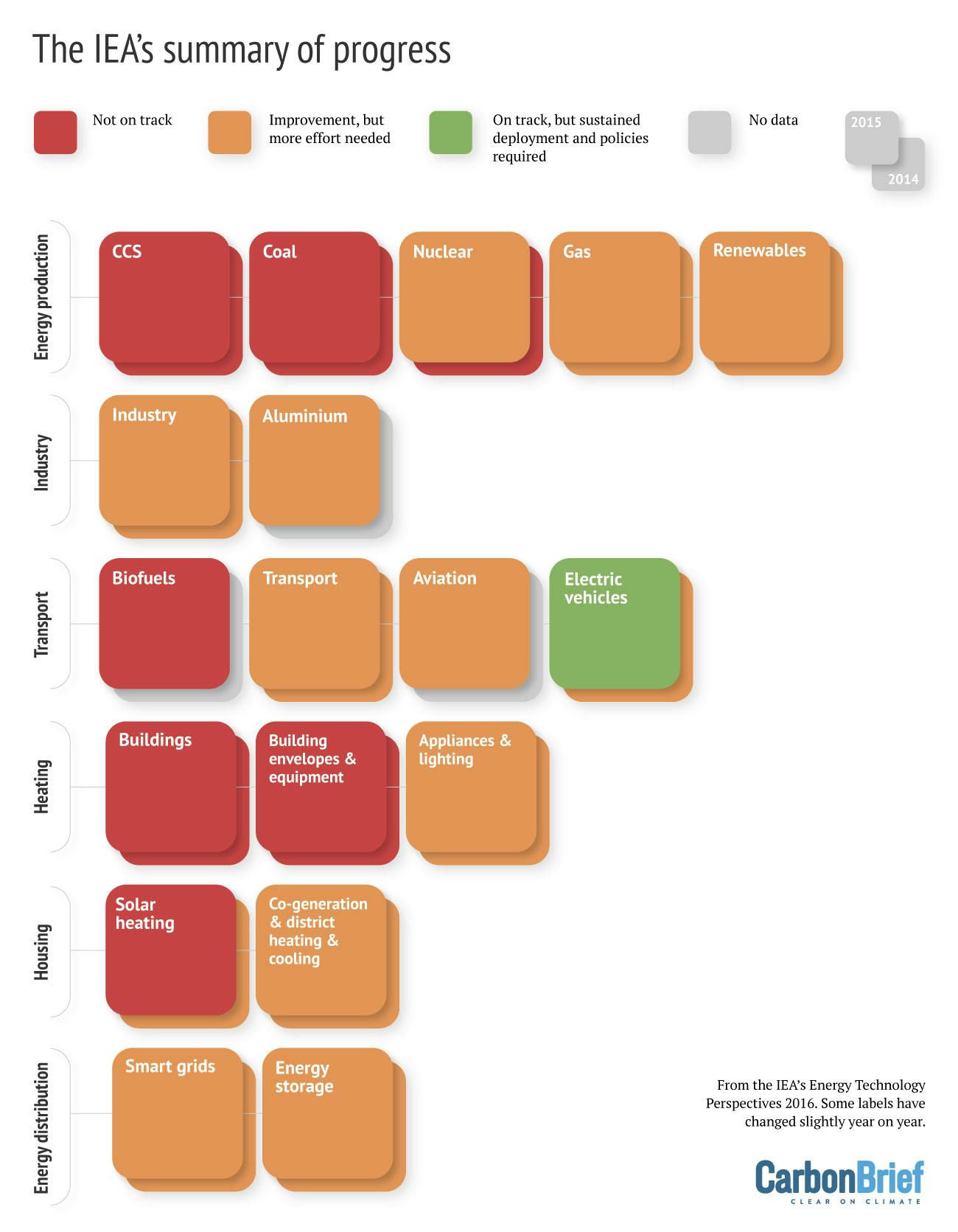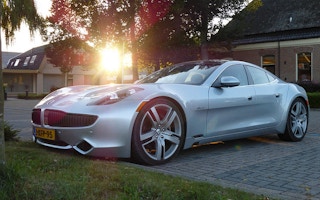The rapid growth of the industry means that it is now the only technology sector on track to meet the International Energy Agency’s (IEA) 2C scenario.
This is the conclusion of the IEA’s Energy Technology Perspectives 2016 report, which it released on Wednesday. This is the latest edition of their annual progress review of the technologies that will determine the rate of global emissions, including renewables, nuclear, CCS and coal.
Last year’s report, covered by Carbon Brief, painted a bleak picture. It deemed that none of the 19 technologies it tracks had made the necessary progress to limit global temperature rise to below 2C. It said that five technologies were off track, while the remaining 14 were failing to improve fast enough.

Scenarios
The IEA’s 2C scenario (2DS) sets out a pathway that would lead to a 50 per cent chance of limiting global average temperature rise since the preindustrial era to 2C. This means cutting CO2 emissions almost 60 per cent by 2050 compared to 2013 levels.
This scenario – as is also the case for its 4C and 6C scenarios – includes milestones for energy supply, buildings, industry and transport. Emissions reductions across all these sectors, it says, are vital for hitting the 2DS, as the graph below illustrates.

Global emissions reductions required across various sectors in order to reach interim 2025 targets that will lead to a 50 per cent chance of staying below 2C. Source: IEA Energy Technology Perspectives 2016.
Its models are a combination of forecasting to reflect near-term trends and “backcasting” to develop plausible pathways to the long-term outcome. The report then ranks progress based on how far each technology or sector is from its interim target for 2025 under the 2DS.
Electric vehicle progress
In 2015, sales of electric cars around the world amounted to 477,000, taking the total volume up to 1.15m. Sales grew by 70 per cent over 2014 levels. The IEA says that this means it is catching up with the rates needed to meet the 2DS.
In an interview with Carbon Brief, the IEA’s chief economist Laszlo Varro says: “Electric cars are roughly 10 years behind wind and solar in terms of deployment and technology development. Still, electric car technology is also gathering momentum. Electric cars increasingly capture the consumer’s imagination.”
The US, China, Netherlands and Norway accounted for 70 per cent of all the electric cars sold worldwide. In 2015, China became the world’s largest electric car market. But growth was also occurring outside these countries. The number of countries with a market share of electric cars greater than 1 per cent grew from three in 2014 to six in 2015.
There have also been notable successes which show an “emerging niche” for electrification, says the IEA. This includes the decision of La Poste, France’s national mail carrier, to electrify its delivery fleet with 5,000 fully electric Renault Kangoos, with plans to double its electric fleet by 2020.

PHEV stands for plug-in hybrid vehicles, and BEV stands for battery electric vehicles. Source: IEA Energy Technology Perspectives 2016.
Such growth is encouraging, says the IEA, after annual sales growth had slowed in 2014 to 53%.
To remain on track with the 2DS, average annual sales growth will have to be sustained at 66 per cent through 2020 and at 39 per cent through 2025. This now “seems achievable”, says the IEA, although it highlights that there will need to be sustained support. It says: “Continued support for RD&D [research, development and deployment] is needed to hasten the milestone year when purchase costs of cars with all-electric ranges capable of meeting most driving needs reach parity with ICE [internal combustion engine] cars.”
“
Electric cars are roughly 10 years behind wind and solar in terms of deployment and technology development. Still, electric car technology is also gathering momentum. Electric cars increasingly capture the consumer’s imagination.
Laszlo Varro, chief economist, International Energy Agency
This growth in electric cars has been helped by a simultaneous boom in public charging infrastructure, with the installation of fast DC chargers growing by 350 per cent in China alone in 2015. This expanding network, along with improvements in driving range, are helping to narrow the gap between electric and conventional cars, and may foster broader adoption, the IEA says.
Working together
While the growth in electric cars is promising, the IEA emphasises that everything is interlinked. “Decarbonisation of electricity must accompany the push to electrify transport in the 2DS,” it says.
This is why the IEA insists on seeing the system as a whole within its scenarios. The 2C target cannot be hit unless there is also swift progress on renewable, nuclear, gas and coal-fired power, where the news is less positive. CCS and energy storage could also have an important role to play in a decarbonised power sector.
This story was published with permission from Carbon Brief under a Creative Commons license.

















